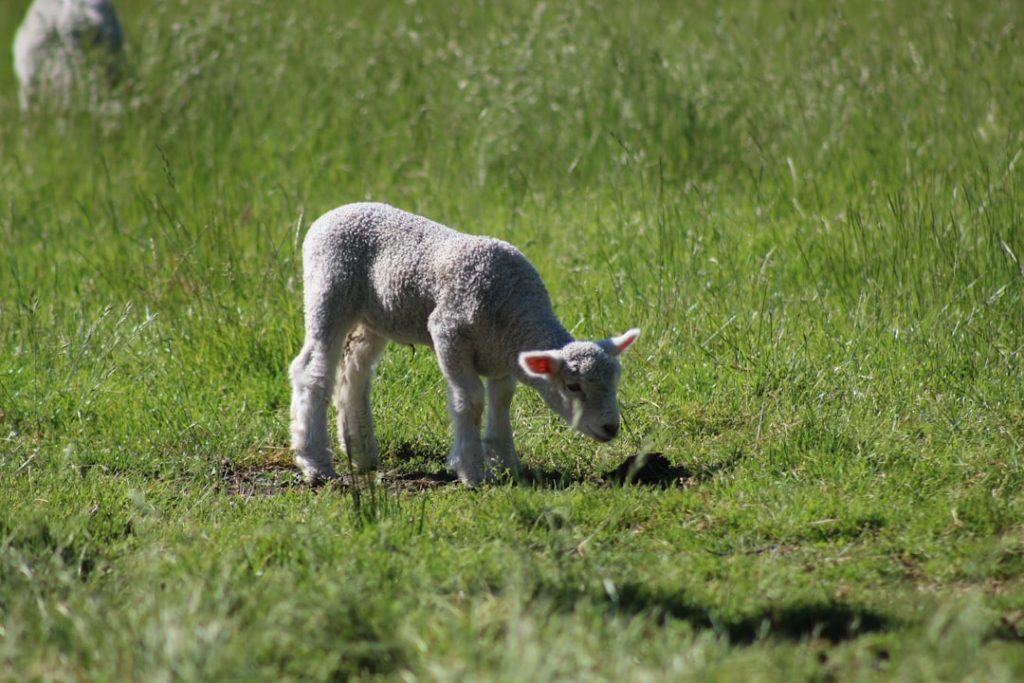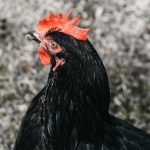Maintaining separate breeds of chickens is essential for several reasons. Each breed possesses unique characteristics, including size, temperament, and egg-laying capabilities. Keeping breeds separate ensures that each receives appropriate care tailored to its specific needs.
This practice also prevents crossbreeding, which can result in the loss of breed purity and dilution of desirable traits. Preserving breed purity is particularly crucial for rare or heritage breeds to maintain genetic diversity and ensure long-term survival. Separation of breeds can help prevent the spread of diseases and parasites, as different breeds may have varying levels of resistance to certain illnesses.
For breeding purposes, maintaining distinct breeds allows for selective breeding to enhance specific traits such as egg production, meat quality, or unique plumage. This approach can lead to the development and improvement of breed characteristics, resulting in healthier and more productive chickens. In the context of poultry shows and exhibitions, breed separation is important as different breeds have distinct standards and characteristics that are judged.
Keeping breeds separate ensures that each breed meets these standards. Additionally, maintaining breed separation can be beneficial for marketing purposes, as consumers may seek eggs or meat from specific breeds. This practice allows producers to cater to niche markets effectively.
Table of Contents
- 1 Understanding the Different Needs of Each Breed
- 2 Preventing Crossbreeding and Maintaining Breed Purity
- 3 Managing Multiple Breeds in the Same Space
- 4 Providing Adequate Housing and Space for Each Breed
- 5 Feeding and Nutrition Considerations for Different Breeds
- 6 Health and Disease Management for Multiple Chicken Breeds
- 7 FAQs
Key Takeaways
- Keeping breeds separate is important to maintain breed purity and prevent crossbreeding
- Understanding the different needs of each breed is crucial for their health and well-being
- Preventing crossbreeding and maintaining breed purity requires careful management and separation
- Managing multiple breeds in the same space requires adequate housing and space for each breed
- Feeding and nutrition considerations for different breeds should be tailored to their specific requirements
- Health and disease management for multiple chicken breeds requires vigilance and proactive measures
Understanding the Different Needs of Each Breed
Space and Environmental Requirements
Each breed of chicken has its own unique set of needs and requirements. For example, some breeds are better suited for free-ranging and foraging, while others may thrive in a more confined space. Understanding the specific needs of each breed is crucial for providing appropriate care and ensuring the overall well-being of your flock.
Dietary Requirements and Preferences
Additionally, different breeds may have varying dietary requirements, with some breeds needing higher protein levels for optimal egg production or muscle development. By understanding the different needs of each breed, you can tailor your feeding program to meet these specific requirements, leading to healthier and more productive chickens. Furthermore, each breed may have different environmental preferences, such as temperature tolerance and shelter requirements.
Some breeds may be more cold-hardy and require less insulation in their housing, while others may need additional heat sources during colder months. By understanding these differences, you can provide appropriate housing and environmental conditions for each breed, ensuring their comfort and health. Additionally, different breeds may have varying social dynamics and pecking orders, which can impact their behavior and well-being in a mixed flock. Understanding these dynamics can help you manage multiple breeds in the same space more effectively, reducing the risk of aggression or bullying among different breeds.
Providing Appropriate Care and Promoting Harmony
Overall, understanding the different needs of each breed is essential for providing appropriate care, promoting productivity, and maintaining harmony within your flock. By recognizing and catering to these unique needs, you can create a thriving and harmonious environment for your chickens to flourish.
Preventing Crossbreeding and Maintaining Breed Purity
Preventing crossbreeding is essential for maintaining the purity and integrity of each breed. Crossbreeding can lead to a loss of desirable traits and characteristics, as well as dilution of genetic diversity within a breed. This can be especially detrimental for rare or heritage breeds, as it can lead to a decline in population numbers and an increased risk of extinction.
By keeping breeds separate and preventing crossbreeding, you can help preserve the unique qualities and genetic diversity of each breed, ensuring their long-term survival and sustainability. Additionally, maintaining breed purity is important for breeding purposes. Breeders may selectively breed for specific traits, such as egg production, meat quality, or unique plumage, and maintaining breed purity is essential for achieving these breeding goals.
Furthermore, maintaining breed purity is also important for showing and exhibition purposes. Poultry shows have strict standards and criteria for each breed, and maintaining breed purity is crucial for meeting these standards and showcasing the best qualities of each breed. Finally, maintaining breed purity is important for marketing purposes.
Consumers may be specifically interested in purchasing eggs or meat from a particular breed, and maintaining breed purity allows you to cater to these niche markets. Overall, preventing crossbreeding and maintaining breed purity is essential for preserving the unique qualities, genetic diversity, and marketability of each breed.
Managing Multiple Breeds in the Same Space
Managing multiple breeds in the same space requires careful planning and consideration to ensure the well-being and harmony of your flock. Firstly, it’s important to consider the social dynamics and pecking order within a mixed flock. Different breeds may have varying levels of aggression or dominance, and it’s important to monitor their interactions to prevent bullying or aggression among different breeds.
Providing adequate space and resources can help reduce competition and minimize conflicts within a mixed flock. Additionally, managing multiple breeds in the same space requires attention to housing and environmental conditions. Different breeds may have varying environmental preferences, such as temperature tolerance and shelter requirements.
Providing appropriate housing that meets the needs of all breeds is essential for promoting their comfort and well-being. Furthermore, managing multiple breeds in the same space also requires consideration of feeding and nutrition. Some breeds may have different dietary requirements or feeding behaviors, and it’s important to provide a feeding program that meets the specific needs of each breed.
Overall, managing multiple breeds in the same space requires careful observation, planning, and consideration of their social dynamics, housing needs, and feeding requirements to ensure the overall well-being and harmony of your flock.
Providing Adequate Housing and Space for Each Breed
Providing adequate housing and space for each breed is essential for promoting their comfort, health, and well-being. Different breeds may have varying space requirements based on their size, activity level, and environmental preferences. It’s important to provide enough space for each breed to move around freely, exercise, and engage in natural behaviors such as dust bathing and foraging.
Overcrowding can lead to stress, aggression, and reduced productivity within a mixed flock. Additionally, providing appropriate housing that meets the needs of each breed is crucial for promoting their comfort and well-being. Some breeds may require additional insulation or heat sources during colder months, while others may prefer more ventilation during warmer months.
Providing housing that meets the specific environmental preferences of each breed can help promote their overall health and productivity. Furthermore, providing adequate housing and space for each breed is also important for preventing the spread of diseases and parasites. Overcrowding can increase the risk of disease transmission within a mixed flock, so it’s important to provide enough space to minimize contact between different breeds.
Additionally, providing appropriate housing that meets the specific needs of each breed can help reduce stress and promote their immune function, reducing the risk of illness within your flock. Overall, providing adequate housing and space for each breed is essential for promoting their comfort, health, productivity, and disease resistance within a mixed flock.
Feeding and Nutrition Considerations for Different Breeds

Dietary Requirements and Feeding Behaviors
Additionally, some breeds may have different feeding behaviors or preferences that need to be taken into account when providing food. For example, some breeds may be more aggressive eaters or have higher energy requirements than others. Providing appropriate feeding methods that accommodate these differences can help ensure that all breeds receive adequate nutrition without competition or stress.
Nutrient Requirements and Supplements
Furthermore, feeding and nutrition considerations for different breeds also extend to factors such as protein levels, vitamins, minerals, and supplements. Some breeds may require higher protein levels for optimal egg production or muscle development, while others may benefit from additional vitamins or minerals based on their specific needs. Providing a balanced diet that meets the nutritional requirements of each breed is essential for promoting their overall health and productivity within a mixed flock.
Optimal Health and Productivity
Overall, feeding and nutrition considerations for different breeds are essential for promoting their overall health, productivity, and disease resistance within a mixed flock. By taking into account the unique needs and requirements of each breed, farmers can create a thriving and productive mixed flock.
Health and Disease Management for Multiple Chicken Breeds
Health and disease management for multiple chicken breeds requires careful observation, monitoring, and preventative measures to ensure the overall well-being of your flock. Firstly, it’s important to monitor the health status of each breed regularly to detect any signs of illness or disease early on. Different breeds may have varying levels of resistance to certain illnesses or parasites based on their genetic makeup or environmental preferences.
Understanding these differences can help you tailor your disease management strategies to meet the specific needs of each breed. Additionally, implementing preventative measures such as vaccination programs or biosecurity protocols can help reduce the risk of disease transmission within a mixed flock. Different breeds may have varying susceptibility to certain diseases or parasites based on factors such as age or genetic predisposition.
Implementing preventative measures that target the specific risks associated with each breed can help minimize the spread of illness within your flock. Furthermore, providing appropriate housing that meets the specific environmental preferences of each breed can help reduce stress and promote their immune function, reducing the risk of illness within your flock. Overall, health and disease management for multiple chicken breeds requires careful observation monitoring preventative measures tailored to meet the specific needs of each breed to ensure their overall well-being within a mixed flock.
If you’re interested in keeping different types of poultry together, you may want to check out this article on whether guinea fowl can live with chickens. Click here to learn more about keeping guinea fowl with chickens. It’s important to understand the dynamics of different bird breeds before introducing them to each other.
FAQs
What is the importance of keeping breeds separate in chickens?
Keeping breeds separate in chickens is important to maintain the purity of the breed and to prevent crossbreeding. It also allows breeders to selectively breed for specific traits and characteristics.
How do you keep breeds separate in chickens?
Breeds can be kept separate by housing them in separate coops or enclosures to prevent intermingling. Additionally, breeders can carefully monitor breeding activities and separate birds as needed to maintain breed purity.
What are the benefits of keeping breeds separate in chickens?
Keeping breeds separate allows for better control over breeding programs, helps preserve the unique characteristics of each breed, and ensures that breed standards are maintained. It also allows breeders to produce purebred offspring for exhibition or sale.
What are the risks of not keeping breeds separate in chickens?
Not keeping breeds separate can result in crossbreeding, which can lead to the loss of breed purity and the dilution of desirable traits. It can also make it difficult to accurately predict the characteristics of offspring, leading to inconsistencies in breed standards.
Meet Walter, the feathered-friend fanatic of Florida! Nestled in the sunshine state, Walter struts through life with his feathered companions, clucking his way to happiness. With a coop that’s fancier than a five-star hotel, he’s the Don Juan of the chicken world. When he’s not teaching his hens to do the cha-cha, you’ll find him in a heated debate with his prized rooster, Sir Clucks-a-Lot. Walter’s poultry passion is no yolk; he’s the sunny-side-up guy you never knew you needed in your flock of friends!







